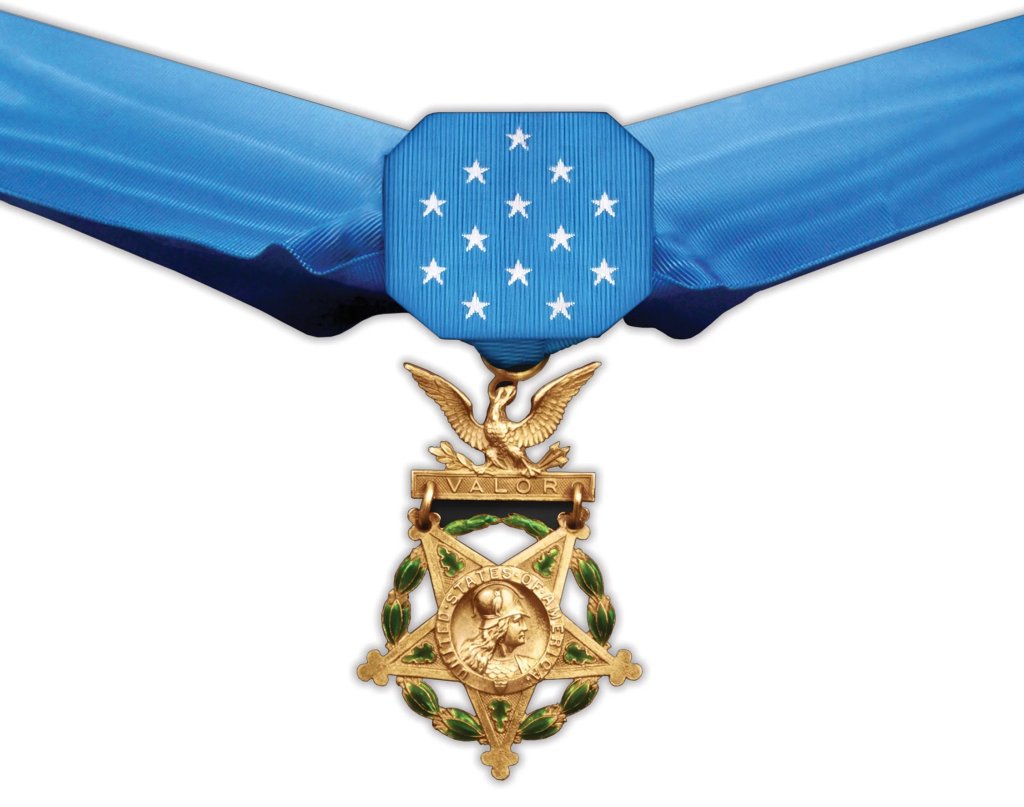Go For Broke: Shinyei Nakamine – The Last Advance at La Torretto
Crawling forward through mud and flying steel, he closed the distance to within 25 yards of an enemy nest. With his submachine gun roaring, he leapt into the trench, killing three German gunners and taking two prisoner.
September 26, 2025

 Shinyei Nakamine – The Last Advance at La Torretto
Shinyei Nakamine – The Last Advance at La Torretto
On a February morning in 1920, in the plantation town of Waianae, Oahu, a boy was born to Okinawan immigrant parents. His name was Shinyei Nakamine. He grew up in the shadow of the cane fields and under the warm Pacific breeze, a quiet young man who worked as a cook’s apprentice and later planted trees with the Civilian Conservation Corps. His future seemed destined for family, labor, and the steady rhythm of island life. Yet history would call him to something greater—a trial of fire far from the shores of Hawaii.
Drafted into the U.S. Army on November 14, 1941—just weeks before the attack on Pearl Harbor—Nakamine first trained with the 298th Infantry Regiment before joining Company B of the 100th Infantry Battalion. The “One-Puka-Puka” was an all-Nisei unit, composed of second-generation Japanese Americans who carried a double burden: to fight Germany’s armies on foreign soil, and to fight prejudice at home. They knew that every action in combat was not only for survival, but for honor—the honor of their families, their community, and their place in America.
On June 2, 1944, Nakamine’s destiny came to meet him in the hills near La Torretto, Italy. His platoon was pinned down, trapped under the deadly crossfire of German machine guns. To remain in place meant certain destruction; to advance meant near-certain death. It was in that desperate moment that Nakamine rose.
Crawling forward through mud and flying steel, he closed the distance to within 25 yards of an enemy nest. With his submachine gun roaring, he leapt into the trench, killing three German gunners and taking two prisoner. Later that same afternoon, he spotted a group of enemy soldiers threatening his unit’s flank. Once more, he crawled through the firestorm and struck them down before they could turn their weapons on his comrades.
But his courage was not spent. Ahead, another machine-gun nest, 75 yards away, poured death into his platoon. Leading his automatic rifle team, Nakamine hurled grenades, wounding one enemy and forcing four more to surrender. His actions opened a path through the fire and chaos, giving his brothers-in-arms a chance to survive.
Then, turning toward yet another emplacement a hundred yards away, Nakamine pressed forward. He did not stop. He did not hesitate. This time, however, the storm claimed him. A burst of machine-gun fire cut him down, ending his life at just 24 years old.
For his valor that day, Shinyei Nakamine was awarded the Distinguished Service Cross. But like so many of his Nisei brothers, the recognition was incomplete, clouded by the prejudice of the time. It would take more than half a century before history corrected itself. On June 21, 2000, in a White House ceremony, President Bill Clinton placed the Medal of Honor in the hands of Nakamine’s sister, declaring before the world that his courage was eternal.
Today, Shinyei Nakamine rests at the National Memorial Cemetery of the Pacific—the Punchbowl—in Honolulu, at Section D, Site O-402. Visitors who stand before his grave see not only the name of a soldier, but the memory of a young man who crawled forward when others could not, who silenced the guns that trapped his comrades, and who gave his life so that others might live.
His story is more than the battle at La Torretto. It is the story of a Nisei soldier who bore the weight of doubt, who endured both bullets and prejudice, and who proved his loyalty in blood. Shinyei Nakamine’s last advance was not just an act of war—it was a testament of honor, sacrifice, and the unyielding spirit of a generation.
At Ghosts of the Battlefield, we are committed to preserving and sharing these stories of the 100th Infantry Battalion and 442nd Regimental Combat Team. Heroes like Shinyei Nakamine remind us that courage is not measured by survival, but by the willingness to rise when everything is against you. His name endures as part of a legacy that must never be forgotten.

